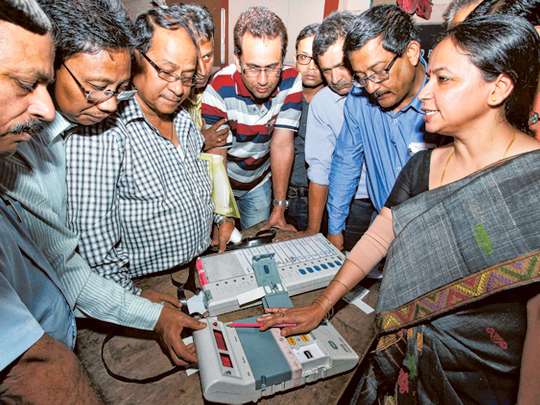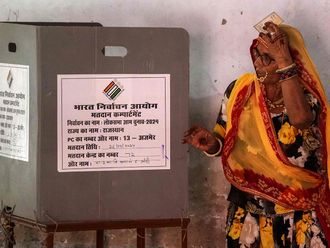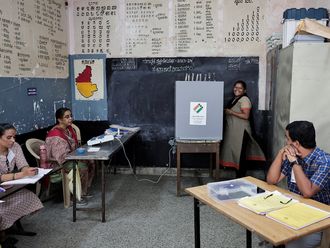
New Delhi: Free and fair elections are central to the democratic ethos of any country. This includes fair, accurate and transparent electoral process with outcomes that can be independently verified.
Conventional voting accomplishes many of these goals. However, electoral malpractices like bogus voting and booth capturing pose a serious threat to the spirit of electoral democracy.
It has thus been the endeavour of the subsequent governments and the Election Commission of India to make reforms in the electoral process to ensure free and fair elections.
Devised and designed by Election Commission of India in collaboration with two Public Sector undertakings — Bharat Electronics Limited and Bangalore and Electronics Corporation of India Limited, Hyderabad — Electronic Voting Machines (EVMs) are a major step in this direction.
EVMs have now become the leitmotif of the world’s largest democratic exercise and gets smarter with each avatar.
To implement electronic voting in part from 1999 elections and in total since 2004 elections, EVMs are being used in Indian general and state elections.
According to the Election Commission of India, the EVMs reduce the time in both casting a vote and declaring the results compared to the old paper ballot system.
Also bogus voting and booth capturing can be greatly reduced by the use of EVMs. Moreover, illiterate people find EVMs easier and simpler than ballot paper system.
EVMs retain all the characteristics of voting by ballot papers, while making polling a lot more expedient. Being fast and absolutely reliable, EVMs save considerable time, money and manpower. And, of course, they help maintain total voting secrecy without the use of ballot papers. EVMs are 100 per cent tamper proof.
The EVM consists of two units that can be interlinked. One, a ballot unit which a voter uses to exercise his vote. And the other, a control unit, used by the polling officials.
Inside the control unit is an extremely sensitive circuitry that takes care of common election errors or malpractices like vote duplication. For instance, if one were to press two or more buttons simultaneously, then no vote would be cast.
Even if there was a micro-second difference in the pressing of the switches, the EVM is sensitive enough to trace and identify the switch that was pressed first. It completely eliminates the possibility of invalid and doubtful votes which, in many cases, are the root causes of controversies and election petitions.
Significantly, there is no way to prevent booth capturing as such unless the EVM itself is snatched away by the booth capturers. However, the machine cannot register more than five votes in a minute or 300 votes in an hour whereas a ballot box could be stuffed with any number of ballot papers. Further, on the sight of the booth capturers, the presiding Officer can stop the polling by pressing the ‘Close’ button in the control unit.
Also, the Indian EVM is a far simpler machine than its counterpart in the United States. Unlike in the United States, Indian EVMs are stand-alone machine which cannot be connected to any network and controlled through any network or remote.












